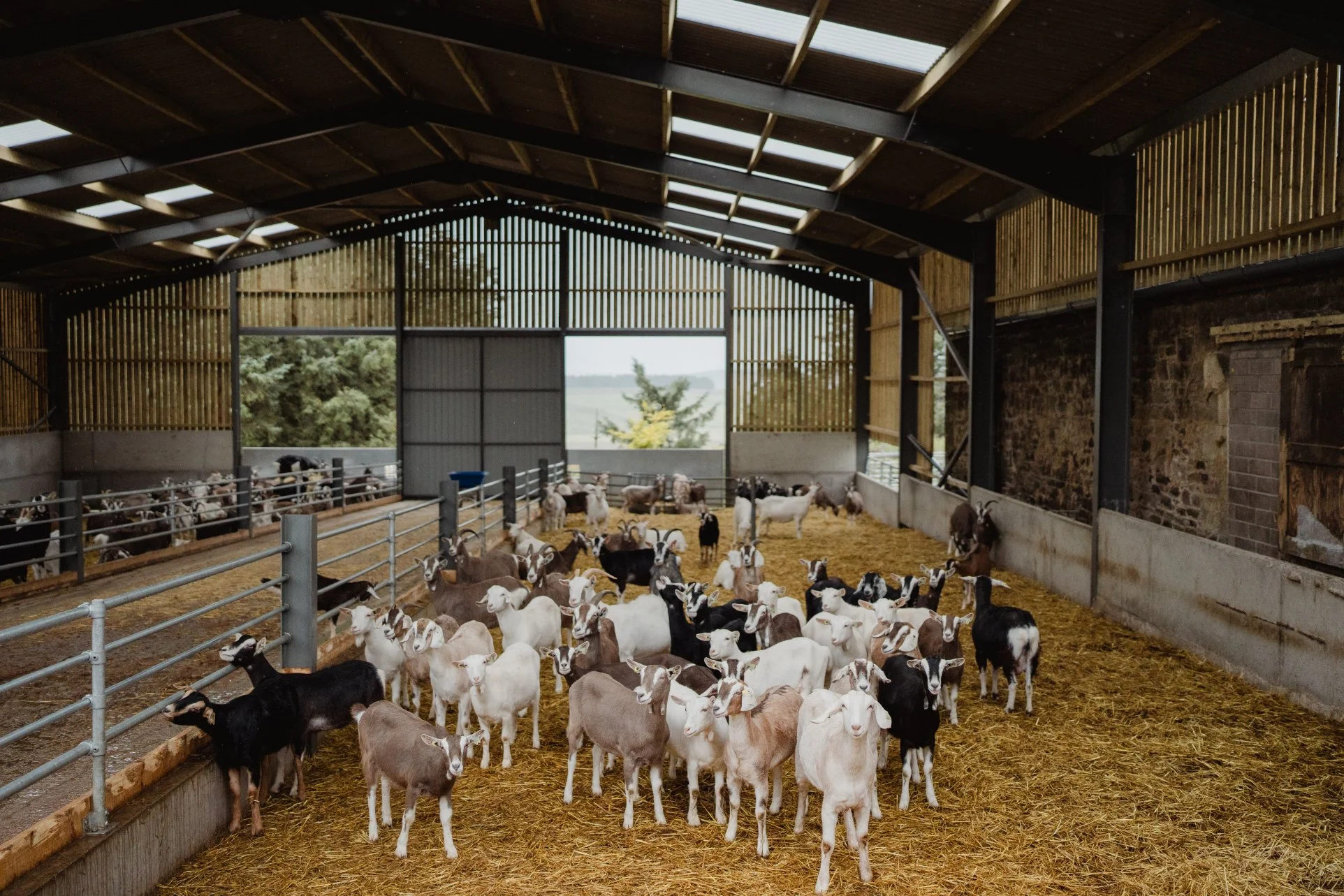MILKING OUR HERDS OF PASTURE-GRAZED SHEEP AND GOATS
Milking is one of the most important parts of milk production, ensuring both quality and hygiene. Our parlour still feels relatively new—though we’re still paying for it! —but it was installed in 2013. It’s an Alfa DeLaval 32-point parallel parlour that records each sheep or goat’s ear tag as they enter through the tunnel. The system tracks individual milk yield, flow rate, and other key data, all stored centrally on the parlour computer. We log everything—breeding lineage, number of lambs or kids, lactation length—which helps us make informed decisions about which animals to breed from.
The parlour is also equipped with automatic cluster removal (ACRs), which detects when the flow rate slows, stopping pulsation and removing the clusters to prevent overmilking.
Keep calm and carry on milking
While being milked, the sheep and goats receive a small feed. The first step in the process is cleaning the udders—at the moment, we use a spray from Porgene called Dual Defense, which is applied from an overhead system and then gently wiped off to remove any surface dirt. The milker checks each teat for any abnormalities before placing the clusters, which create a gentle pulsation to encourage milk letdown. We keep the whole process as calm as possible—it’s always easier when both animals and humans are relaxed. Once milking is complete, the ACRs switch off, and the teats are sprayed again with Dual Defense to help close them and prevent mastitis. From there, the sheep and goats return to the holding pen before heading back to their field or shed.
Milking happens twice a day, starting at around 5am for the sheep, followed by a washdown, then the goats at 7:30am. In the afternoon, we milk the sheep again at 4pm and the goats at 6:30pm. This routine is essential for maintaining udder health.
Udder health is a top priority
Once a month, we test each animal individually to monitor udder health using a Somatic Cell Count. If we detect a high count, we culture it to determine the cause. Depending on the results, the sheep or goat may be removed from the flock or herd, treated, or left as is. This ongoing monitoring gives us valuable insight into the effectiveness of our overall herd management and milk hygiene.
In addition to this, we carry out weekly milk tests for a broad range of pathogens and indicator organisms. We currently use Eurofins, a UKAS-accredited microbiological and chemical testing company based in Linlithgow, approved by the environmental health department in South Lanarkshire Council. We’re also planning to introduce daily in-house testing to give us even more immediate insights into hygiene and milk quality.
Once milk leaves the parlour, it is pumped into bulk tanks via the receiver jar, where it is rapidly cooled to ensure it remains at the highest possible quality—ready to be turned into cheese.



